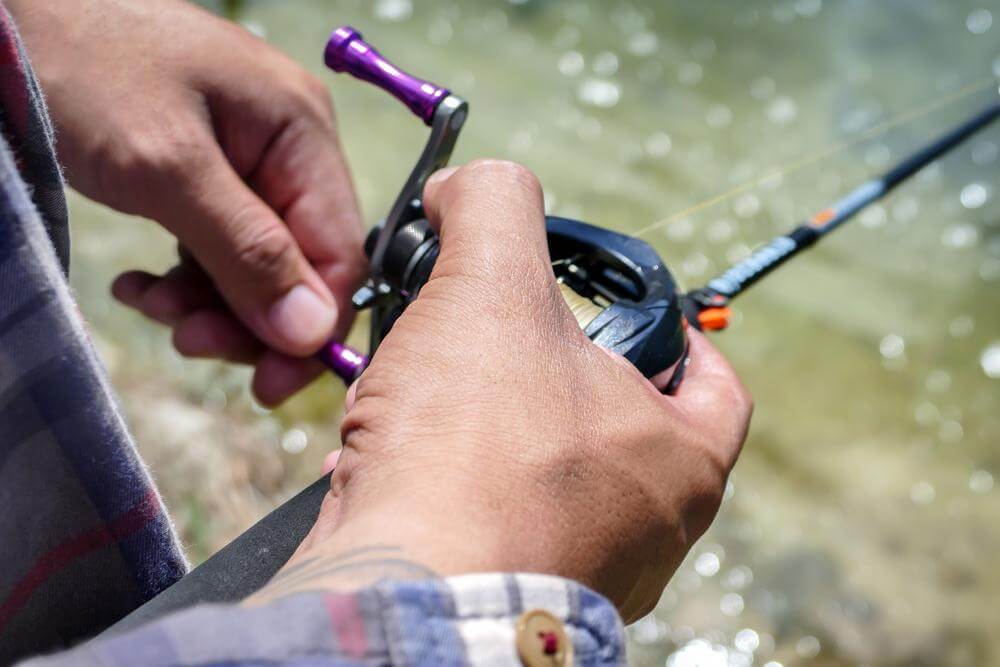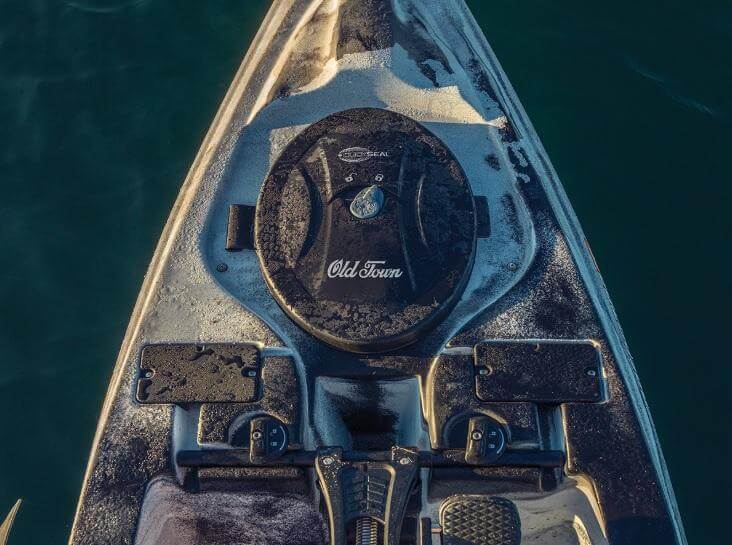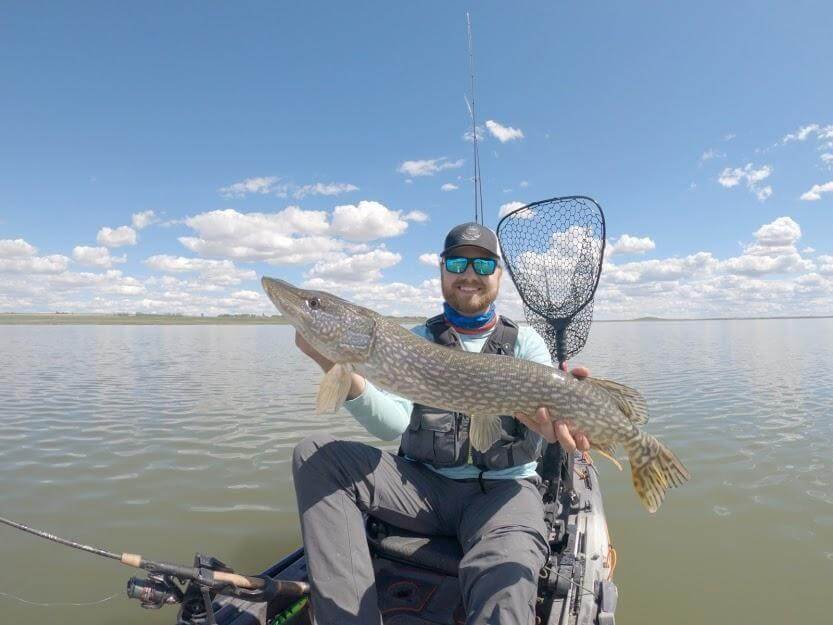Fishing from a kayak is an experience like none other.
It’s the best way to be closer to the water, enjoying the waves and the action of the current. Plus, it’s a fantastic way to catfish tons of fish.
That’s not to say that kayak fishing is without its challenges, however.
Kayaks offer less stability and sometimes, less control over your rod and reel - you’re sitting down, so you can’t use your legs for leverage.
However, I’ve collected some of the best kayak fishing tips to help you master this dynamic style of fishing. Once you get the hang of it, you’ll become a true master of the craft.
Top 10 Kayak Fishing Tips
1. Cast and Paddle One-Handed
In order to truly master kayak fishing, you’re going to need to get a little bit crafty.
One of the most challenging aspects of kayak fishing is learning how to deal with the instability of fishing from such a topsy-turvy watercraft.
Even if you’re fishing from a stable kayak, you won’t have much space between where you are sitting and where the water hits. Therefore, casting with both hands can be challenging, if not impossible.
That’s why most experienced kayak anglers only cast with one hand. You can use either spinning or baitcasting tackle, but you’ll want to set up whichever rod and reel you choose accordingly.
Use lighter tackle and practice the art of one-handed casting in your backyard before you set out on the water.
Learning how to paddle one-handed can also save you out there on the water. This can be even more challenging than casting one-handed, especially if you’re in a heavy current.
Fighting a fish with one hand and trying to stay out of the weeds with the other isn't easy. However, once you get the hang of it, you'll be able to juggle both tasks with ease.
To practice, try locking your paddle shaft along your forearm. This will anchor it along the muscle of your arm and let you use the two-sided paddle more like a canoe paddle.
2. Make the Most of Eddies
Although you might find yourself frustrated beyond belief the first time you fish from a kayak, it’s worth getting back out there for more practice.
The trick to kayak fishing lies in knowing how to work with the conditions you have, instead of against them.
For example, most kayaks are light and short enough to rest entirely in an eddy. This can prevent your boat from moving downstream.
This will buy you enough time to fish the area without having to paddle or lock yourself in.
To make the most of the eddies, go just beyond the spot you want to fish in. Then, tuck into the eddy directly behind it and fish freely without having to paddle.
3. Get Your Feet Involved
Even though you aren’t using your legs to brace yourself from a standing position, there are still ways you can use your feet to help stabilize you while you are fishing.
For example, if your boat is narrow enough (and your legs are long enough!) you can use your feet as rudders.
This will help you steer on the river and it will also let you anchor when you are fishing in a shallow area.
All you have to do is extend your leg and use your foot to hold on to a log, stump, or another object while you are fishing. Using your feet is also a great way to keep yourself in place while you’re fighting a fish.
4. Cast to Steer
Consider using a bait with some resistance, like a spinnerbait, crankbait, or chatterbait, to help you steer your boat.
When you’re fishing with one of these baits from a lightweight kayak, you’ll discover that the simple act of reeling in your bait will help propel your boat in the direction in which you are casting.
5. Whenever Possible, Stay Close to Shore
It can be tempting to head far offshore to go after the bigger fish, but when you’re fishing from a kayak, the closer you stay to shore, the better.
You will want to use the minimal draft of your kayak to your advantage. Rather than paddling down the center of the lake, try to remain as shallow as possible.
You won’t have to perry as much about the current, nor will you have waves and end to deal with.
Although waves and wind still, of course, exist close to shore, the vegetation there will help offset some of their effects. You'll be able to save energy and fish more safely the closer to shore you remain.
6. Anchors Away
A lot of kayak anglers shy away from using anchors in the sport. However, you’ll want to consider using anchors, even though they can be somewhat cumbersome to drag along.
Anchors can help you out when it’s windy or when you're trying to fish offshore in a particular area. You don’t need a behemoth of an anchor, either - something as light as a two-pound claw anchor will do the trick.
You do need to be a little bit careful when using an anchor, as anchoring in a heavy current can push your boat underwater. If you’re worried about this, use a quick-release clevis so you can get out in an emergency, if need be.
7. Always Wear a PFD
This is an important tip for fishing from any kind of boat, but especially fishing from a kayak.
Kayaks are known to tip more easily than other kinds of watercraft. Therefore, it’s essential that you wear a PFD (personal flotation device).
It doesn’t matter how good of a swimmer you are. An unexpected flip into the water can kill.
Make sure you buy a paddle-specific PFD, which will have a thinner, higher back to make it more comfortable in a kayak seat.
These also tend to be more breathable, so it won't be a total nuisance for you to wear it.
You may also want to keep a straight blade nearby so that you can cut your fishing line if it gets caught on something.
8. Invest in a Fishing-Specific Kayak
There are all kinds of kayaks out there, but not all of them are equally well-suited to fishing.
If you’re new to kayaking (or a total kayak fishing beginner) and haven’t bought your boat yet, spend a bit of extra time and money to find the right one.
Kayaks that are designed for fishing might be a little bit more expensive than the alternatives, but trust me - they’re worth it.
And if you know you’re going to be spending a lot of time fishing, it will actually end up being cheaper to buy the right kayak now than to buy a regular kayak and upgrade it later.
9. Be Aware of Other Vessels
This tip is especially important for kayak anglers out on the deep sea, but it’s a rule you should follow regardless of where you are fishing.
Situational awareness is vital. Make sure you have a good idea of how long it will take you to cross a large waterway before you start the journey.
Watch out for oncoming vessels as they’re moving at high speeds that can be tough for you to predict. Most of the time, these boats will catch up to you a lot more quickly than you might think.
On the ocean, you have to watch out for tanker ships. These boats are extremely large and therefore, create large waves.
You’ll need to have a strategy in place for crossing those waves. In most cases, it’s best to paddle directly toward them rather than traveling parallel, as this can put you at risk of capsizing.
10. Make a Detailed Packing List - and Check it Twice
Just as if you were fishing from any other kind of boat, you’ll need to make a detailed packing list before you venture out in your kayak.
Food and water are essential. You’ll also need to bring along regular fishing gear like nets, pliers, gloves, fish grips, line cutters, and stringers.
Don’t forget the camera, either - the best way to document your success out on the water is to pack along a camera with a mount. It will be one less thing you have to handle and flange when you're trying to fish from a top-heavy kayak, yet will still allow you to photograph all of the day’s excitement and adventures without skipping a beat.
Get Out There and Fish!
Okay, so I lied - I actually have eleven kayak fishing tips for you!
This one is my personal favorite.
If you’re thinking about kayak fishing, the most important thing you can do is get out there and fish as often as possible.
True, it does take some practice in order to master the craft. However, kayak fishing is one of the most rewarding experiences you will have as an angler.
There’s nothing quite like feeling the ebb and flow of the water under your boat as you reel in catch after catch.
So quit dallying - get out there and go fish!






